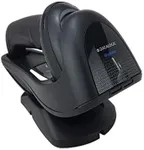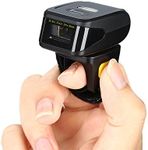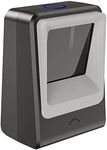Buying Guide for the Best Code Reader
Choosing the right code reader can significantly enhance your ability to diagnose and fix issues with your vehicle. A code reader, also known as an OBD-II scanner, connects to your car's onboard diagnostics system to read and clear error codes. This tool is essential for both professional mechanics and car enthusiasts who want to maintain their vehicles. When selecting a code reader, it's important to consider several key specifications to ensure it meets your needs and provides accurate, reliable information.CompatibilityCompatibility refers to whether the code reader can connect and communicate with your vehicle's onboard diagnostics system. This is crucial because not all code readers work with all car models. Generally, most code readers are compatible with vehicles manufactured after 1996, but it's always best to check if the specific model supports your car's make and model. If you have multiple vehicles or plan to use the code reader on different cars, look for one with broad compatibility.
FunctionalityFunctionality encompasses the range of tasks the code reader can perform, such as reading and clearing error codes, displaying live data, and performing advanced diagnostics. Basic code readers can read and clear codes, which is sufficient for simple troubleshooting. More advanced models offer additional features like real-time data monitoring, ABS/SRS diagnostics, and emission testing. Consider what level of detail and functionality you need based on your experience and the complexity of the issues you expect to encounter.
User InterfaceThe user interface includes the display and controls of the code reader. A clear, easy-to-read screen and intuitive navigation are important for quickly understanding the information provided. Some code readers have simple monochrome screens, while others feature color displays with graphical data representation. If you prefer a more user-friendly experience, opt for a model with a larger, color screen and straightforward menu options.
ConnectivityConnectivity refers to how the code reader connects to your vehicle and other devices. Traditional code readers connect via a wired OBD-II port, but many modern models offer wireless connectivity through Bluetooth or Wi-Fi. Wireless models can connect to your smartphone or tablet, allowing you to use dedicated apps for more detailed analysis and data storage. Choose a connectivity option that fits your workflow and preferences.
UpdateabilityUpdateability is the ability to update the code reader's software to include new features and support for newer vehicle models. This is important for keeping the tool relevant and useful over time. Some code readers offer free lifetime updates, while others may require a subscription or one-time fee. If you plan to use the code reader for many years or on newer vehicles, ensure it has a straightforward update process.
Data Storage and LoggingData storage and logging capabilities allow the code reader to save diagnostic information for later review. This can be useful for tracking recurring issues or sharing data with a mechanic. Some code readers have internal memory, while others can export data to external devices. If you need to keep detailed records of your vehicle's diagnostics, look for a model with ample storage and easy data transfer options.





















